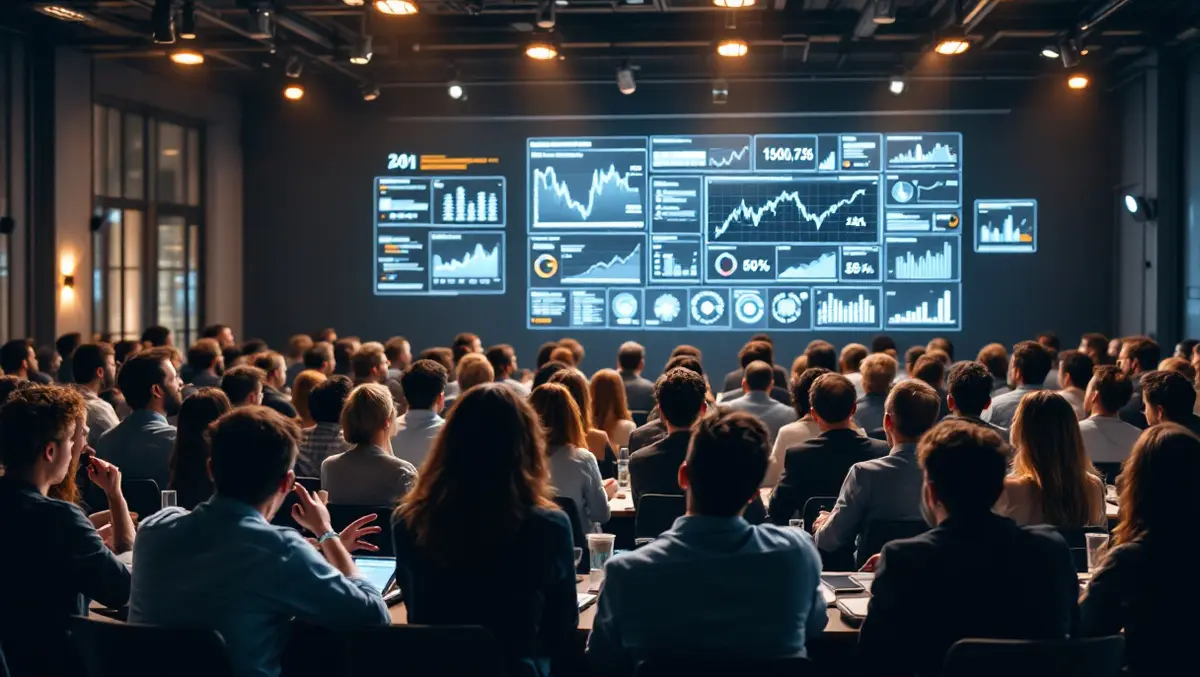
OpenAI forum explores AI’s economic impact and direction
At the recent forum hosted by OpenAI in ATxSummitt Singapore, Chief Product Officer Kevin Weil and Stanford professor Erik Brynjolfsson explored the challenges, opportunities, and economic implications of artificial intelligence, offering candid reflections on AI's role in productivity, policy, and how it complements or competes with human labour.
Brynjolfsson, a leading voice on the economics of technological change, acknowledged the ongoing debate about whether AI is delivering tangible gains. "Right now, if you look at the official productivity statistics last quarter, it was 1.2 percent, which is not that impressive," he said. "In the 90s, it was more than twice as high. In the early 2000s, it was more than twice as high."
He argued that the current underwhelming figures are partly a result of how value is measured. "GDP measures a lot of things, but it doesn't do a good job of measuring things that have zero price," he said, citing digital goods like ChatGPT and Wikipedia, which generate value without costing users money.
The other key issue, Brynjolfsson suggested, is structural. "These general purpose technologies... require re-skilling, changing your business processes, figuring out better ways of using the technology," he explained. This delay in payoff is what he and others call the "productivity J-curve". However, he was cautiously optimistic: "I think it's happening a lot quicker this time."
Weil compared previous technological transitions—such as electricity and the internet—to the adoption of AI, noting that AI tools like ChatGPT require far less specialised knowledge. "You don't need to learn a new arcane coding language," he said. "It does... maybe you have to learn a little bit of prompting."
The conversation turned to the potential for AI to disrupt existing business structures by empowering new entrants. "Can they make the cycle go faster because they're actually able to punch above their weight class?" Weil asked. Brynjolfsson concurred but noted that America's rate of business dynamism is decreasing. "There are actually fewer startups... nationwide. And there's less movement between companies, there's less geographic mobility."
To measure AI's value beyond traditional economic indicators, Brynjolfsson described a new approach: "We've introduced a tool called GDP-B. The B stands for measuring the benefits rather than the costs." Using online choice experiments, his team estimates the consumer surplus of digital goods by asking participants how much compensation they would require to forgo a digital service for a time. "It's meant to be a representative market basket of what's in the economy," he said.
Both speakers also questioned how society currently benchmarks intelligence in AI. Weil noted that evaluations like GPQA aim to assess AI models by comparing them to talented graduate students. "But that's not necessarily the right way to think about some of these models," he said.
Brynjolfsson took the critique further: "With all due respect to my fellow humans, we are not the most general kind of intelligence." He advocated for benchmarks that measure intelligence beyond human-like capabilities. "There are all sorts of other kinds of intelligence... And it's not just an intellectual debate. It has to do with the direction of technology."
The discussion also touched on the risks of over-centralising AI. Brynjolfsson warned of a future where a single AI system might dominate information and decision-making: "Maybe that will be more efficient if you have enough processing power. But... the humans wouldn't have a lot of bargaining power."
Weil countered by highlighting the fragmented nature of data access. "No public model... will have access to all of the data that's relevant to solve the totality of problems... The vast majority of the world's data is private." This, he argued, makes it likely that multiple models will always coexist.
In discussing trust in AI, Brynjolfsson offered a candid anecdote: "There was an article... where they had three treatments: the human-only, the AI-only, and the doctor plus the AI. And... the doctor plus the AI did worse than the AI alone." He attributed this to current systems being insufficiently interpretable. "They have to be able to trust and know... if the AI system just says, 'cut off the patient's left leg,' and the doctor's like, 'why?'... it's got to explain all the reasoning."
As the event closed, both speakers emphasised the importance of supporting innovation through infrastructure like OpenAI's API. "Every time we drop the price and offer more intelligence, people can solve more problems," said Weil.
Brynjolfsson emphasised the same idea: "Some people derisively call these things wrappers... Actually, I think that's where a ton of the value is going to be coming... customised for a particular vertical."
In sum, the discussion underscored that while AI holds the potential to dramatically shift productivity and economic structures, its full impact will depend on how it is adopted, measured, and integrated with human capabilities.


